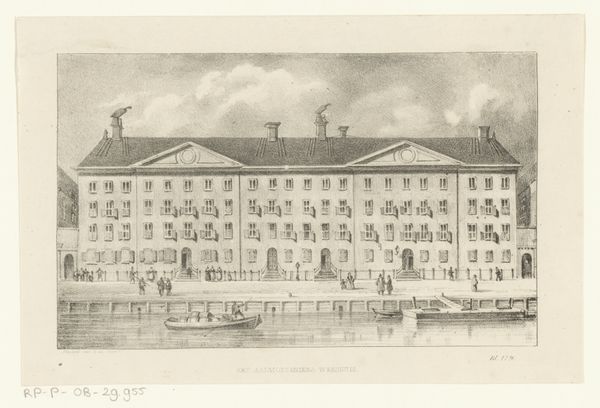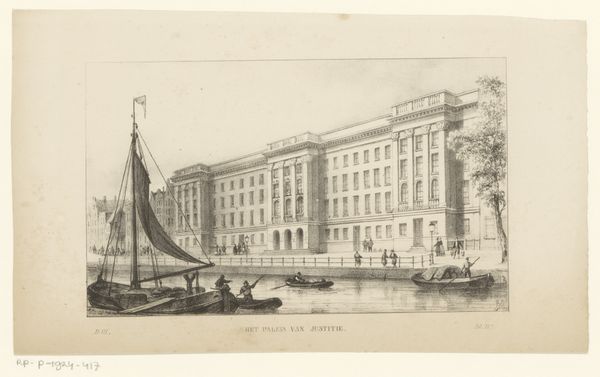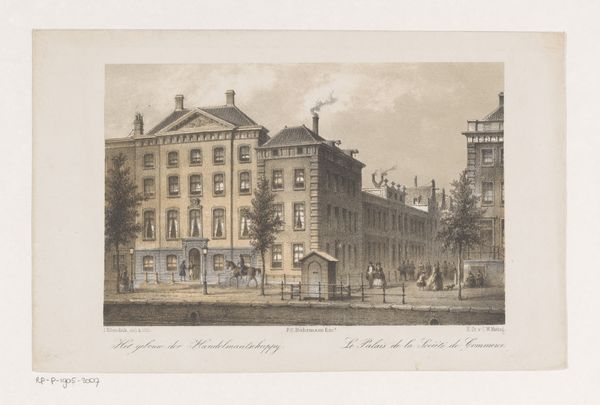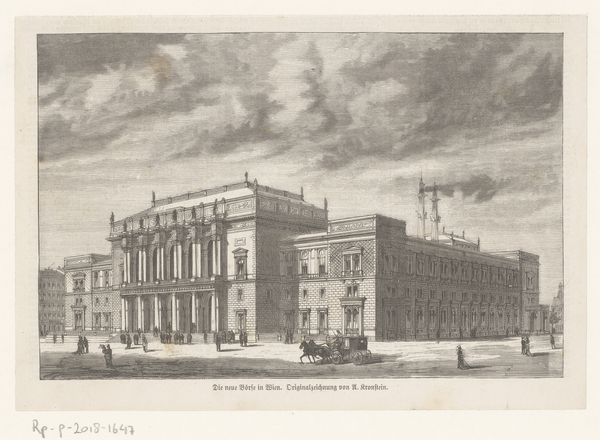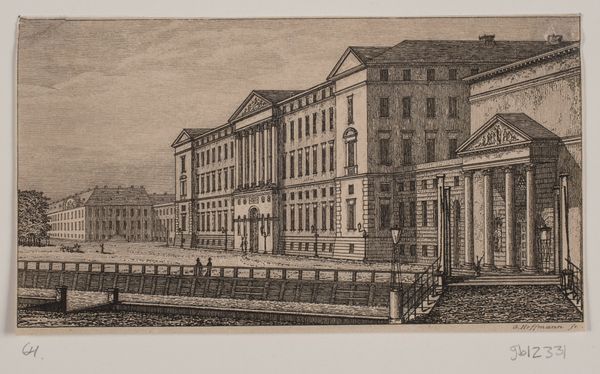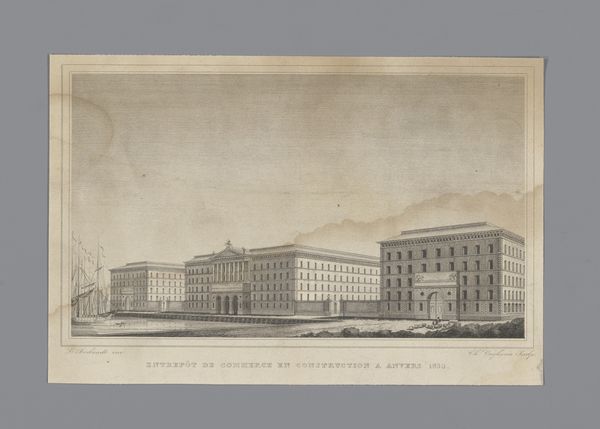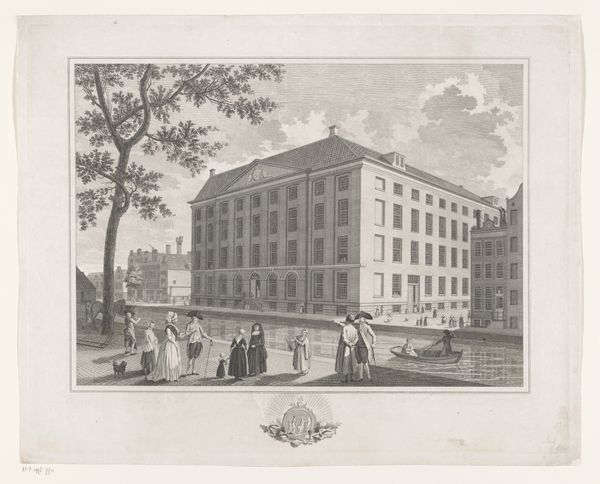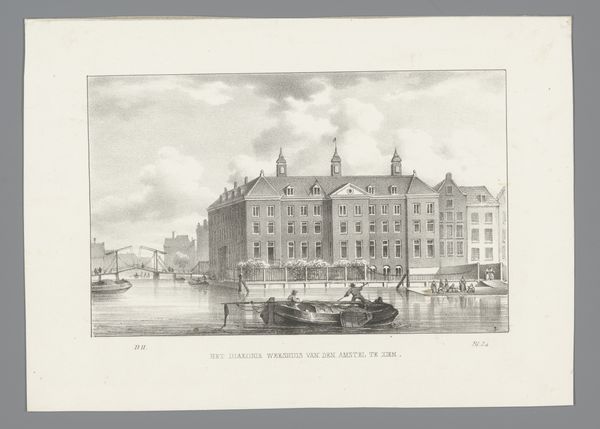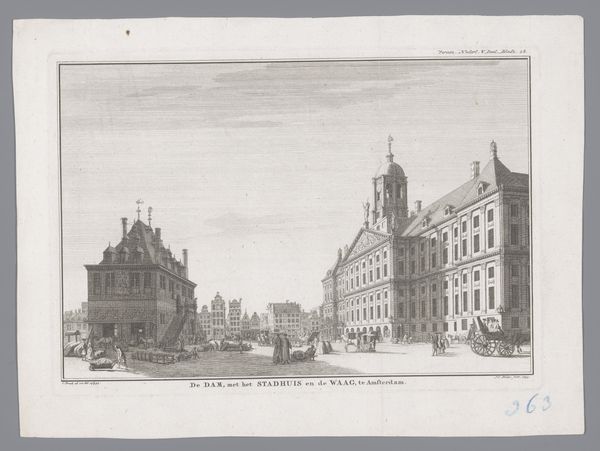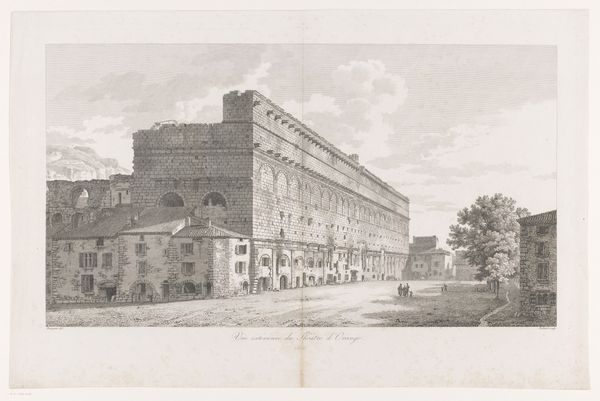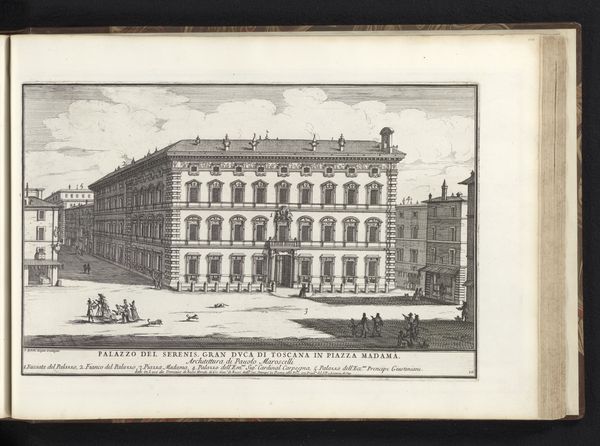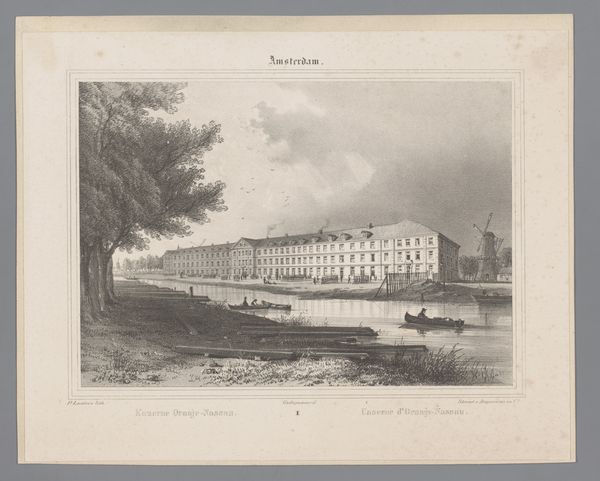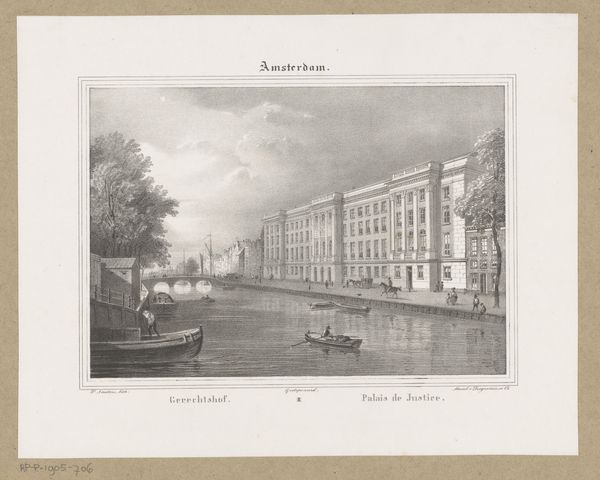
Dimensions: height 125 mm, width 160 mm
Copyright: Rijks Museum: Open Domain
Editor: This etching, "Zeemansverblijf in Rotterdam," likely created sometime between 1843 and 1876 by Carel Christiaan Antony Last, depicts a bustling cityscape. It has this wonderfully balanced, calm atmosphere despite the busy scene. What historical insights does this piece offer? Curator: It's interesting to consider this image within the context of Rotterdam's development as a major port city during that period. Etchings like these, reproduced and circulated widely, helped to shape a particular public image of the city—one of industry, progress, and, crucially, maritime power. Editor: So it’s not just a depiction, but a constructed image? Curator: Exactly. Look at the prominent placement of the "Matroozen Logement" (Sailors' Lodging). The etching implicitly celebrates the infrastructure that supports seafaring and trade, emphasizing the city's commitment to this identity. And note the scale of the building relative to the people; how does that contribute to your reading? Editor: It gives the building a sense of importance, a physical representation of Rotterdam’s maritime ambitions. The people are almost secondary. Do you think this piece played a role in attracting more maritime workers to Rotterdam? Curator: It's very possible. These images functioned as promotional material, albeit in a more subtle form than modern advertising. It suggested stability and opportunity. Editor: That’s fascinating, I’d never considered art from this angle before. Seeing art as a social force, subtly shaping our perception of places and progress. Curator: Precisely. It encourages us to critically examine how imagery can be used to promote certain social and political agendas. Always remember to consider the ‘why’ behind the ‘what’ of art.
Comments
No comments
Be the first to comment and join the conversation on the ultimate creative platform.
